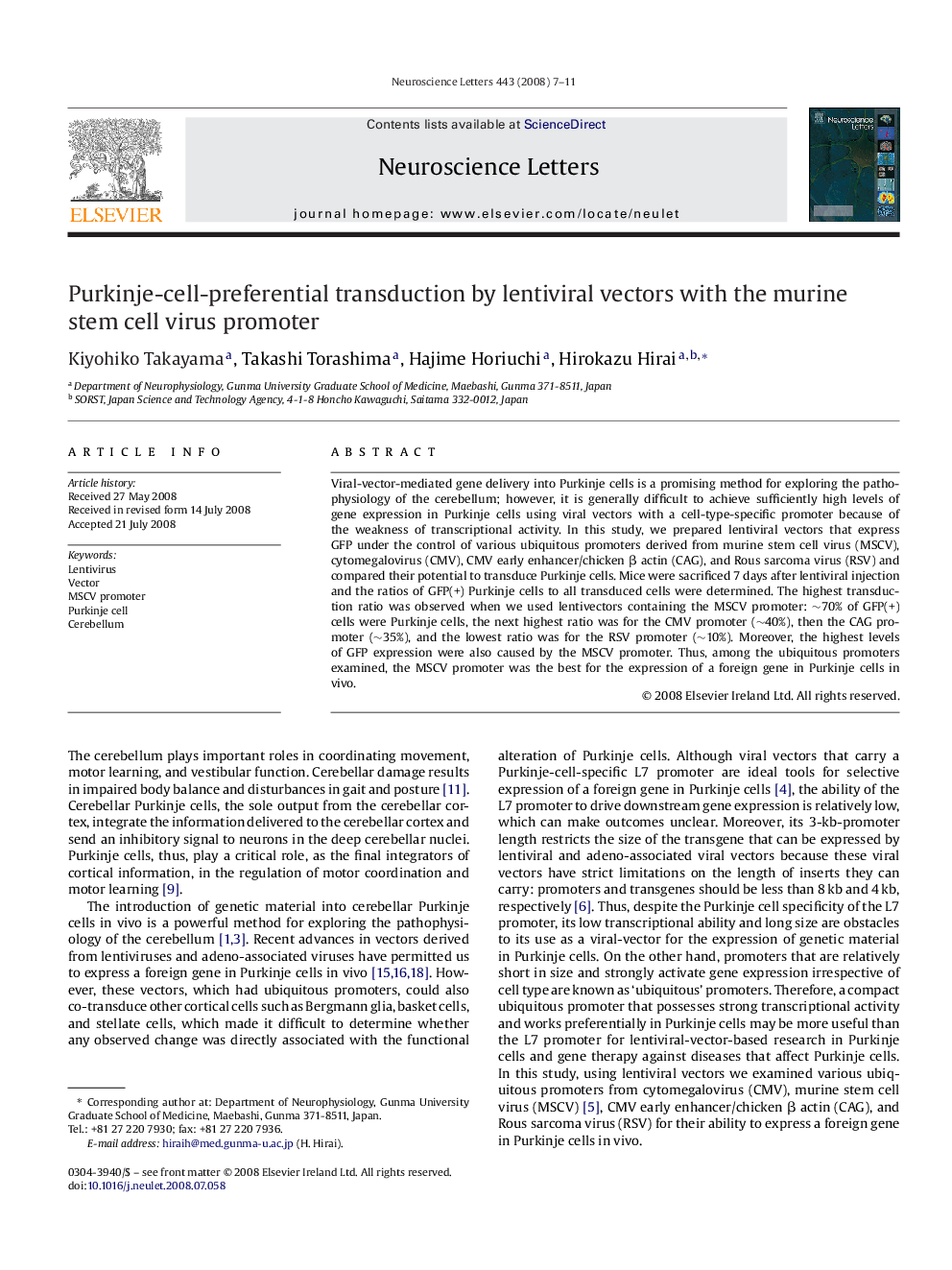| Article ID | Journal | Published Year | Pages | File Type |
|---|---|---|---|---|
| 4347860 | Neuroscience Letters | 2008 | 5 Pages |
Viral-vector-mediated gene delivery into Purkinje cells is a promising method for exploring the pathophysiology of the cerebellum; however, it is generally difficult to achieve sufficiently high levels of gene expression in Purkinje cells using viral vectors with a cell-type-specific promoter because of the weakness of transcriptional activity. In this study, we prepared lentiviral vectors that express GFP under the control of various ubiquitous promoters derived from murine stem cell virus (MSCV), cytomegalovirus (CMV), CMV early enhancer/chicken β actin (CAG), and Rous sarcoma virus (RSV) and compared their potential to transduce Purkinje cells. Mice were sacrificed 7 days after lentiviral injection and the ratios of GFP(+) Purkinje cells to all transduced cells were determined. The highest transduction ratio was observed when we used lentivectors containing the MSCV promoter: ∼70% of GFP(+) cells were Purkinje cells, the next highest ratio was for the CMV promoter (∼40%), then the CAG promoter (∼35%), and the lowest ratio was for the RSV promoter (∼10%). Moreover, the highest levels of GFP expression were also caused by the MSCV promoter. Thus, among the ubiquitous promoters examined, the MSCV promoter was the best for the expression of a foreign gene in Purkinje cells in vivo.
